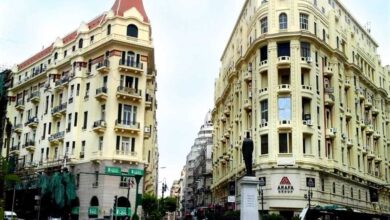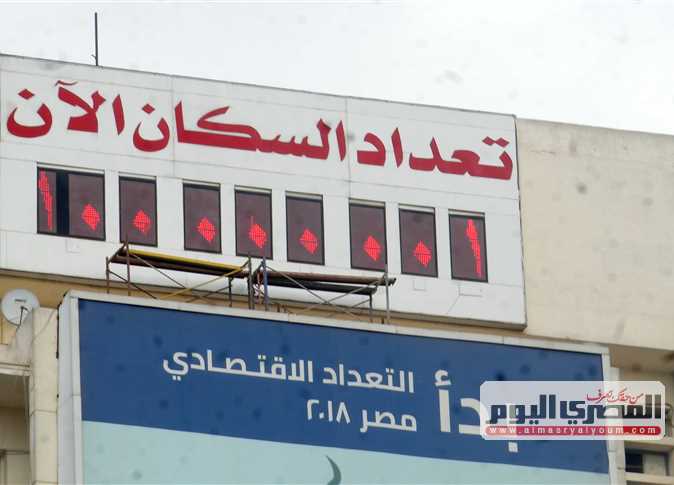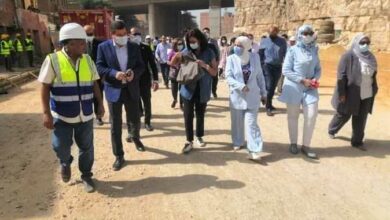Behind the growing nostalgia for a once orderly and beautiful Cairo lies an alarming metamorphosis that is scarcely brought up in the Egyptian press: Cairo is being restructured around elite consumption patterns causing the exclusion of the majority of its residents.
There is an outdated notion that hyper-urbanization induced by rural-urban migration is to blame for the ills of Cairo. Yet figures show a sharp decline in the rates of rural-urban migration as the city holds less promise for upward social mobility. While the influx of rural migrants declines, Cairo has also experienced an internal population redistribution due to urban sprawl, as people move from core areas of the city to the peripheries.
This demographic redistribution is indicative of a growing social divide that has come to mark Cairo’s urban landscape. For the past few years, UN-Habitat has been warning against inequalities bred in Third World metropolises where rich neighborhoods and gated residential communities often exist in close proximity to poor informal settlements that lack basic services.
Cairo is a prime example: As middle and working-class neighborhoods slip into degeneration and as more people are born into under-serviced slums, oases of luxury and plots of impeccable greenery pop up in the desert surrounding the city.
Cairo’s urban polarization is in part a consequence of neoliberal policies, which have yielded an irrational building boom largely catering to elite consumer demands, while at the same time denying most Cairenes access to state services and social benefits which they once had.
In the 1980s, Egypt like many other countries, began actively promoting free-market reforms and the privatization of state assets, which have gradually resulted in rising unemployment, the removal of state protections, and a growing informal economy especially in low-wage services. Instead of the prophesied trickle-down-effect, real wages have dropped over the past 30 years, raising the cost of living for the majority of Egyptians.
With the inflow of foreign capital and the rise of local monopolies representing western-based transnationals and backed by state support, there has emerged a new bourgeoisie whose lifestyle and demands for distinction have significantly reshaped the city. An upper middle class–composed mostly of managerial and high-tech professionals–has coalesced that draws its income from a globally-integrated private sector. They constitute a labor aristocracy making up no more than an estimated 10 percent of the population, as their wages far exceed those of other middle-class public and private employees.
The urban landscape is increasingly being structured around a market that is inaccessible but to a small minority. The construction of luxury housing and gated communities, which has been accelerated by a frenzied influx of speculative capital, well exceeds the number of families who can actually afford them. Mega-recreational projects and shopping malls catering to this tiny fraction of Cairenes have been springing up across Cairo. Even the less upscale venues like restaurants, cafes, and cinemas prefer to rely wholly on the incomes of the privileged sector; a glass of juice at Cilantro can exceed an unskilled worker’s day pay, and a family visit to the cinema may amount to a worker’s monthly wage.
Such exclusion is not merely achieved through price-filtering. Cairo’s bourgeoisie is also socialized–through a set of elite schools and universities–to acquire cultural capital (such as fluency in English and acquaintance with global standards and fashions) which allows them access to various privatized spaces, thus reproducing the process of polarization. An increasing number of businesses employ various exclusionary mechanisms to seek out such a clientele: the use of English as the official language of transaction, the fortification of their establishments with “security” gates, and the imposition of high minimum charges and entrance fees..
Meanwhile the government promotes this exclusionary logic more broadly in its urban development policies. Rather than spending on schools and hospitals, it subsidizes the exodus of the city’s elite by building extensive highway networks and bridges to facilitate the commuting of the chosen few. The state is privatizing existing parks and its plans to extend green areas come with selective restrictions on who can use these spaces, as the poor are becoming widely perceived as polluters. Even basic services that until recently were taken for granted, such as access to public bathrooms, benches and potable water fountains, are being made increasingly unaffordable.
Such flagrant inequalities in income and consumption patterns translate into a security craze, which media and businesses feed on. Urban slums are repeatedly likened to a time bomb and movies that nourish middle-class social anxieties are becoming box office hits (take Khaled Youssef’s films, for example). Ad campaigns for new satellite cities offer urban residents protection against a city imagined to be rife with crime. Such fears have produced an arsenal of security systems and an obsession with preserving social boundaries. High Walls, security guards and police dogs are only the most obvious examples. The city has become militarized and elite neighborhoods have turned into fortified luxury compounds, largely inaccessible to most urban residents except as workers.
A city’s level of prosperity and harmony, shaped by many factors like geography and population growth, is ultimately determined by government policy. The state should direct its funds (our money) into countering the ongoing process of polarization and exclusion. Instead it is doing the opposite. The government’s long-term urban development plan, Cairo 2050, aims at a a “cleaner, greener and better Cairo” which posits the city as a space for potential investment and revenues. No mention is made of improving the average citizen’s access to urban infrastructure and services.
It is doubtful that solutions will come from the good will of the state, which has actively participated in the polarization process by allying itself with business interests through the sale of cheap desert lands to developers and the subsidization of luxury housing.
Exclusion and social stratification affect most Cairenes who are denied basic control over their daily lives. For this unfortunate majority, there is more to Cairo’s cruelty than noise and smoke: Cairo is becoming an increasingly segregated city. Instead of relying on the benevolence of the wealthy to address urban poverty, we need to imagine more creative and radical ways of fighting neoliberal dispossession, the real obstacle to social equality and urban harmony.
Rime Naguib is a doctoral student in the sociology department at Northwestern University.




